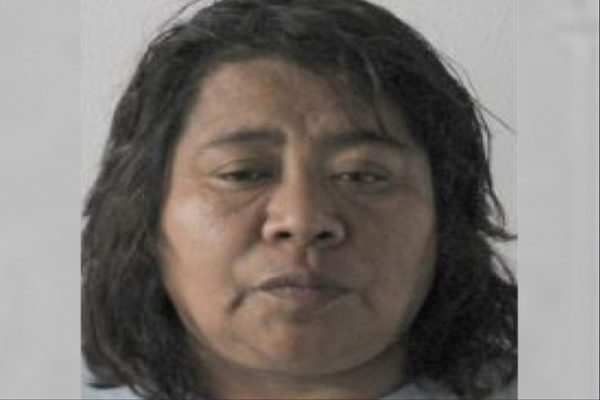
In a way, the lack of Republican cooperation with the January 6 committee was a blessing. When Democrats first moved to launch an investigation into the insurrection, Mitch McConnell and his fellow Senate Republicans wouldn’t allow a bicameral committee. Then House Republicans boycotted taking part in the investigation, refusing to let it be a bipartisan one. Ultimately, only two Republicans joined on the nine-member panel. In the end, the only elected Republican who spoke during the opening evening of the January 6 committee’s hearings on Thursday night was Liz Cheyney, of Wyoming.
But the largely one-party nature of the committee has its advantages: the absence of Republicans also means the absence of obstruction. The result was something very different from what Americans are used to seeing from congressional hearings: a substantive, honest and thorough accounting of an event of massive civic urgency. While most congressional hearings are a showboating circus, with different members attempting to obfuscate the issues at hand, derail the proceedings with non-sequiturs, or cultivate clips that can be played in their next campaign ad, the January 6 hearing, by contrast, was a lucid, methodical, disciplined and well-choreographed presentation of the investigation’s findings.
Those findings are damning. The hearing had its bombshells: the committee revealed that after January 6, “multiple” Republican members of Congress sought pardons from Donald Trump for their role in the attempt to overturn the election. They revealed that Trump said the attackers were “doing what they should be doing”, and that “Mike Pence deserved it”. They worked hard to establish, as the saying goes, what the president knew and when he knew it – and their theory of the case seems to be that Trump knew everything about what was going to happen on that day, and that much of it was his idea in the first place.
Over the course of a little under two hours, the committee laid out a case that the then president and his supporters in the Republican party both deliberately, knowingly lied about the results of the 2020 election, and also deliberately, knowingly incited violence. Members of the committee frankly and repeatedly referred to the events of that day as “a coup”.
There was some fear, before the hearings opened, that the committee would not be able to present new information to the public. This proved not to be the case. Among the most potent revelations made on the hearings’ opening night was just how robustly aware Trump was that his claims of election fraud were baseless. Through video of depositions that the committee conducted with prominent Republicans, the audience learned that Trump had been told there was nothing to substantiate his own claims of voter fraud by campaign staff, White House staff, state governments and his own attorney general, William Barr, who told Trump that the election fraud claims were “bullshit”. Even his own daughter, the loyal if slippery Ivanka Trump, began to distance herself from the election fraud fiction.
In her presentation, Cheney tried to eliminate any doubt that Trump himself was confused about the falsehood of these claims, carefully choosing her words to foreclose the possibility that anyone might interpret Trump as sincere, if deluded, in his claims. Trump was not, as he would have us believe, merely investigating alleged fraud or hoping to preclude any appearance of impropriety. His lies about the election were an attempt to overturn the election and remain in power via fraud. The incitement of the coup on January 6 was an attempt to overturn the election and remain in power by force.
That attempt at force had a disturbing degree of organization and backing. At the hearing, the committee detailed how two violent extremist groups, the Oath Keepers and the Proud Boys, worked in tandem to arrange for large-scale, military-style presence of organized insurrectionists to attack the Capitol, using the mob gathered by Trump at the Ellipse as a disorganized, but violent, supportive force to bolster their own smaller and more skilled fighting units. The notion that this violence was spontaneous and impulsive was dismissed by the evidence presented that both the Oath Keepers and the Proud Boys had been recruiting and rallying members specifically for actions related to the attempt to overturn the election and, perhaps most disturbingly, that the Oath Keepers had been stockpiling weapons outside of DC in northern Virginia for use in possible future attacks on Trump’s behalf.
Through the testimony of Nick Quested, an exceptionally pained-looking British documentarian who testified that he had been following the Proud Boys that day as part of a film project, we learned that “several hundred” Proud Boys walked in formation away from the Ellipse and towards the Capitol before Trump’s speech even began. It was their plan the whole time.
Perhaps the most moving moment of the hearing came from Capitol police officer Caroline Edwards, who in a video was shown standing alone behind a bike rack gate in uniform as a thick crowd insurrectionists shook the metal bars like a dog with a caught rat. Edwards was thrown back onto the ground and suffered a severe head injury, but leapt back into work treating those who had been pepper-sprayed as soon as she regained consciousness. She kept working until she was teargassed.
In the months since January 6, the extreme violence of that day can become muted in the American mind, or blurred together in our imagination with those of all our other national catastrophes – the mounting dead of our anemic response to Covid, the regular massacres in schools and churches from our regular gun massacres. But Edwards made that day vivid once again. “What I saw was just a war scene,” she told the committee. “There were officers on the ground. They were bleeding. They were throwing up. I saw friends with blood all over their faces. I was slipping in people’s blood. I was catching people as they fell. It was carnage. It was chaos.”
Moira Donegan is a Guardian US columnist







